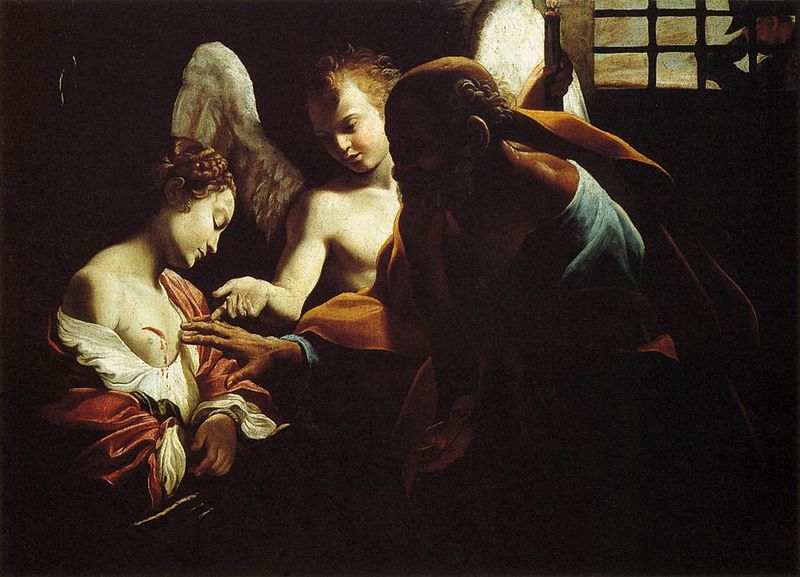St Agatha’s Day
There are thousands of saints who have been venerated by Christians over the century and depicted in art. Since most of their real features are unknown to us, how do artists portray them and how can viewers distinguish one pictured saint from another? The trick is to look for visual clues. A saint, for example, carrying a palm branch may be reliably counted on to be a martyr. Or a saint can be determined by the presence of the weapon that killed him — St Paul by a sword, St Lawrence by a griddle or St Sebastian by an arrow. Then again, since saints can be prayed to for particular ailments, they are often shown with that particular part of the body emphasized. Those suffering from skin diseases will want to turn to St Job who sat on a dunghill scratching his afflicted flesh. And so it is with St Agatha, the saint who is memorialized with images of a breast.
Agatha was a Christian virgin who was caught up in the Decian persecution of 250. She refused to renounce her religion and so was sentenced to a brothel but refused to participate and remained a virgin. Her breasts were ripped off with pincers (though the painting above shows her wounds being healed by St Peter in their prison) and she was burnt to death on hot coals. To this day, sufferers of sore breasts ask St Agatha to help them. In Catania where she originated, they celebrate her feast day with great spectacle. One visitor has described it thus:
The nearly manic celebration begins at dawn on February 4 when Agatha’s life-sized effigy, dripping in jewels collected since the 12th century, is pulled through the streets on a 40,000-pound silver carriage by a cast of 5,000 men. The soundtrack of the procession is grunting, crying, and the grinding wheels of the carriage or fercolo pushing through molten candle wax. All the while thousands scream, “Viva Sant’ Agata.”
